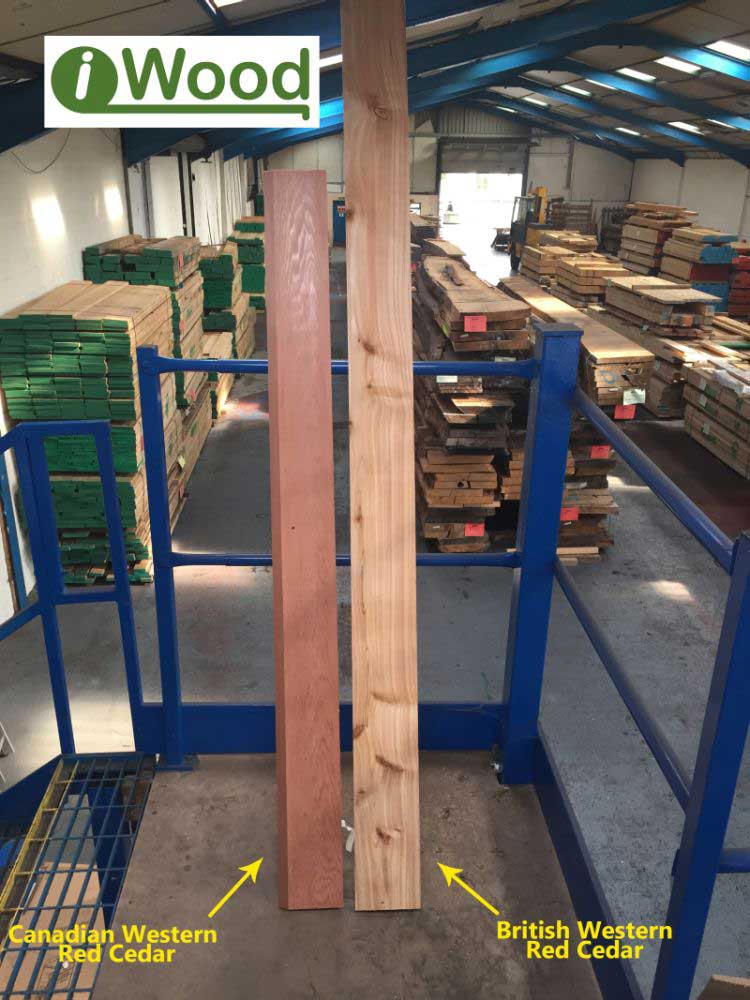Articles: Understanding Timber Grading
What is timber grade?
Even seasoned timber users have questions on this topic so you’re not alone if you’ve found this article today.
Timber is a natural material and as expected, there is a significant variance between each individual piece. To ensure you as a customer receives the correct quality for the job, we must understand grades and how they correlate to strength, utility and value.
From tighter growth rings to felling complications, many factors affect structural strength and durability.
That’s where grading comes in, each unique piece of timber is assigned a grade whether that be a visual grade or a strength classification
Its not always necessary to have a strength grade for timber, for example, external timber cladding does not require a strength grade as it isn’t a supportive structure. Each piece of timber does however have a visual grade which describes the appearance of a timber.
What is a visual grade?
 Here's a great comparison between high grade Canadian Cedar and fresh sawn merchantable British Cedar
Here's a great comparison between high grade Canadian Cedar and fresh sawn merchantable British Cedar
When we say visual grade, its logical to assume it’s a descriptive term to define what features are allowed on a commercially available piece of timber. Whilst that is correct, its not to be confused with visual grade when referring to structural capacity.
When referring to the overall strength of the timber, as you’d expect, a licensed grader will make a visual assessment of a batch of timber and assign it a quality grade which will correspond with certain strength classifications.
The grader will be following guidelines set by various standardizations which describe what features are allowed within a grade and how much of them are allowed.
Generally speaking, the better the grade, the less defects. The less defects, the better the quality and thus the higher the strength grade
That being said, what you may consider a defect someone else may see it as a characterful feature. A great example is with our Prime Oak and Light Character Oak, prime may be the more expensive ‘cleaner’ grade with less ‘defects’, but many customers opt for Light Character as the knots add a rustic and traditional feel to the timber.
What is a strength classification
Strength Class is a designation given to hardwoods and softwoods to allow structural engineers and developers to specify strength requirements of a build.
The BS EN 338 technical specification detail exactly what strength classes are and how they are granted to a particular piece of timber. Simplified, hardwoods and softwoods have their own categories and are further broken down into strength ratings.
For hardwoods, we have six strength classes, D24, D30, D40, D50, D60 and D70. The ‘D’ stands for deciduous, which, in horticulture, refers to trees and shrubs that shed their leaves throughout the seasons.
For softwoods we have 4 strength classes, C14, C16, C18 and C24. The ‘C’ is shorthand for coniferous which is an umbrella term for ‘evergreen’ plants and trees which keep their leaves year-round.
The higher the number, the tougher the wood. It’s worth noting that, whilst they use the same documentation, the rulesets that govern their strength grades aren’t. Which means a C24 softwood for example doesn’t not equate to a D24 hardwood.
Strength classes can either be assigned mechanically by machine stress testing or through corresponding visual grades (not to be confused with the likes of visual ‘aesthetic’ grades)
For example, the European Grade ‘QP1’ is a visual grade assigned to beams of European Oak, this would equate to D24 which is a common structural grade for a variety of structures.
What is C16 and C24 softwood?
C16 and C24 graded softwood are perhaps the two most requested grades of softwood.
C16 softwood is usually strong enough for the vast majority of projects and is a common grade requirement for applications such as roof joists, wall joists, timber framing etc.
C24 is C16’s big brother and is whilst it may be the same species of timber it’s a superior quality timber with fewer defects. This grade is often used in exposed timber due to its more aesthetic appearance.
It can also be used in larger scale projects where strength requirement is an important factor, such as bridges, balconies or terraces.
Some of the most common softwood species used in the timber construction industry are: Douglas Fir, Larch, Pine and Western Red Cedar. Larch being the easiest to grade to C16 and higher.
iWood can supply all manner of softwoods, including C16 and C24 graded softwoods. They aren’t available for pricing on the website but we’re happy to provide a quotation if you send us an enquiry through to the company email.
Softwoods products that you can find online will be supplied at the appearance grade described on each product page, Canadian Western Red Cedar for example is supplied at the highest possible grade - Clear & Better, which is almost completely free of knots offering a very contemporary aesthetic.
For cost effective softwood products offering a traditional appearance, our range of British Timbers are popular options. These timbers are supplied as 'fresh sawn merchantable grade', which is a characterfully knotty visual grade which is suitable when a strength grade isn't required.
What grade is Oak?
Oak is one of our most popular products and we supply Fresh Sawn Green, Air Dried and Kiln Dried Oak.
European Oak is a very durable hardwood species and is often the optimal choice when building structures.
The highest grade of European Oak is QPA grade, assigned by the EN 975 – 1 European Grading rules. There have been numerous campaigns aimed at equating appearance classes to UK strength classes and as such we are able to assign a D30 strength grade to imported QPA beams, D24 to QP1 beams and D18 to QP2.







 Main Menu
Main Menu


